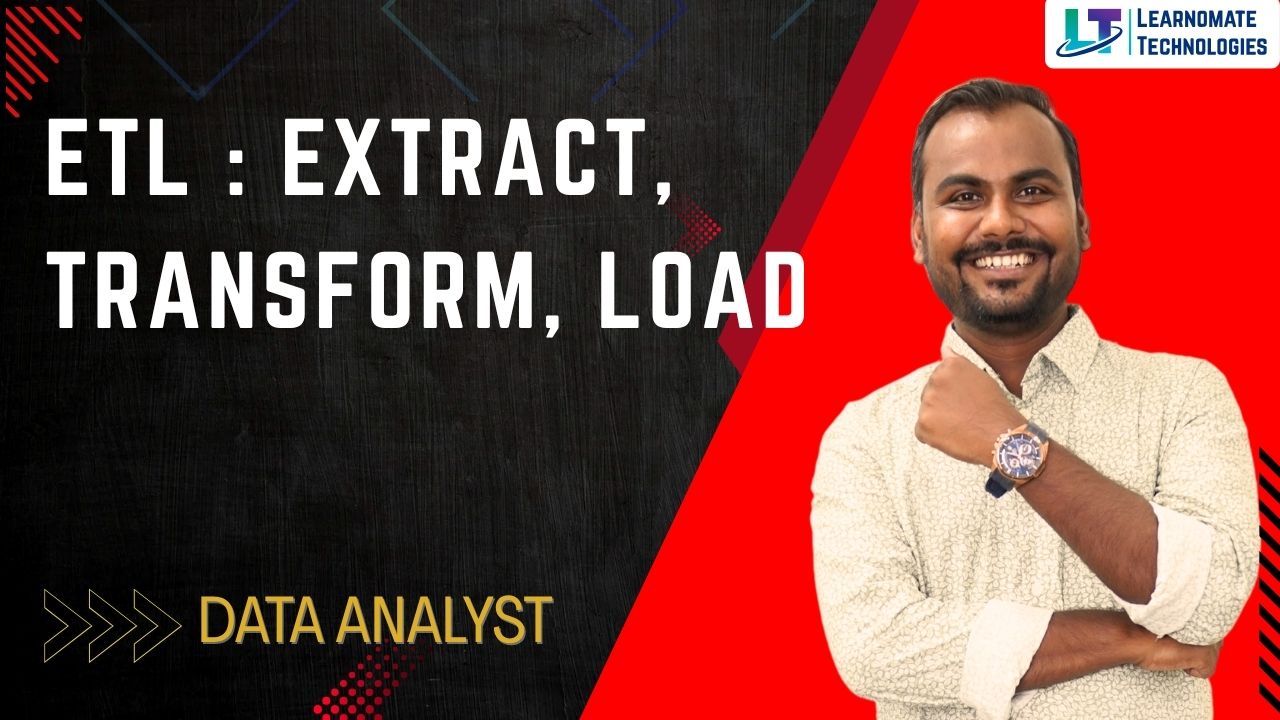ETL : Extract, Transform, Load
ETL Concepts Explained: Extract, Transform, Load Like a Pro
Every successful data project starts with one critical process — ETL (Extract, Transform, Load).
ETL is the foundation of data integration, allowing organizations to move data from multiple sources into a single, reliable system for analysis.
If you’re taking or considering the Google Data Analytics Course, mastering ETL concepts will help you understand how raw data becomes meaningful insight.
1 . What is ETL?
ETL stands for:
-
Extract: Pulling data from multiple sources (databases, APIs, flat files).
-
Transform: Cleaning, filtering, and structuring the data for consistency.
-
Load: Storing the transformed data into a data warehouse or analytics platform.
In simple terms, ETL takes messy, scattered data and makes it analysis-ready.
The ETL (Extract, Transform, Load) process is one of the most fundamental concepts in data analytics and data engineering. It helps in moving data from multiple sources into a central data warehouse or analytics platform. If you’re learning through the Google Data Analytics Course, understanding ETL is crucial to mastering data preparation and analysis workflows.
Extract — Getting the Data
Extraction is the first and most critical step in the ETL pipeline. It involves connecting to multiple data sources and collecting data in various formats such as CSV files, SQL databases, APIs, or cloud platforms.
Common extraction methods include direct database queries, API requests, flat-file ingestion (CSV, JSON, XML), and stream extraction using tools like Kafka or Kinesis.
To ensure consistency and accuracy, data engineers often automate the extraction process with scheduled jobs or specialized tools such as Airbyte, Fivetran, or Apache Nifi.
These tools help streamline the workflow and reduce manual errors, especially when working with large and dynamic data sources.
Transform — Shaping the Data
Once the data is extracted, it moves to the Transformation phase — where data cleaning and structuring take place. This stage ensures the data is usable and ready for analysis.
Transformation tasks include handling missing or duplicate values, converting data types, joining multiple datasets, aggregating or summarizing data, and applying business logic for meaningful insights.
For example, in SQL, you might run a query like:
This step ensures your data is clean, standardized, and analytics-ready — a key skill emphasized in the Google Data Analytics Course.
Load — Delivering the Data
After transformation, the clean and structured data is loaded into a target system such as a data warehouse (like BigQuery, Redshift, or Snowflake) or a BI platform for reporting.
There are two common loading strategies:
-
Full Load – Replaces the entire dataset each time.
-
Incremental Load – Loads only new or updated records, saving time and resources.
For large-scale systems, incremental loading is the preferred choice as it enhances performance and efficiency.
Modern ETL Tools and Technologies
The data landscape has evolved, and modern ETL tools make data movement and transformation more efficient. Tools like Apache Airflow are used for workflow orchestration, while Talend and Informatica provide enterprise-grade ETL solutions.
Cloud-native tools such as AWS Glue, Azure Data Factory, and Google Cloud Dataflow are widely used for scalable ETL pipelines.
Modern ELT tools like dbt (Data Build Tool) have also become popular for transforming data directly inside data warehouses.
The Google Data Analytics Course helps learners get familiar with these tools and how they integrate into real-world data workflows.
ETL vs ELT — What’s the Difference?
In traditional systems, ETL (Extract → Transform → Load) is used — data is transformed before loading into the warehouse. This approach works well for on-premise systems.
However, with the rise of cloud data warehouses like Google BigQuery, a new approach called ELT (Extract → Load → Transform) has gained popularity.
In ELT, raw data is first loaded into the warehouse and then transformed using its compute power, allowing for greater flexibility and scalability.
The Google Data Analytics Course introduces both ETL and ELT, helping analysts choose the right approach depending on their data infrastructure.
Conclusion
ETL is the engine behind every analytics pipeline.
It connects systems, cleans messy data, and ensures analysts work with reliable insights.
If you’re enrolled in the Google Data Analytics Course, focus on learning ETL fundamentals — it’s the bridge between raw data and business intelligence.
Mastering ETL will help you design, automate, and scale data workflows like a pro 🚀
Start your data engineering journey today with Learnomate Technologies and enhance your understanding of real-world data analytics systems.
At Learnomate Technologies, we make sure you not only understand such cutting-edge features but also know how to implement them in real-world projects. Whether you’re a beginner looking to break into the database world or an experienced professional upgrading your skillset—we’ve got your back with the most practical, hands-on training in Oracle technologies.








Let’s keep learning, exploring, and growing together. Because staying curious is the first step to staying ahead.
Happy learning!
ANKUSH


